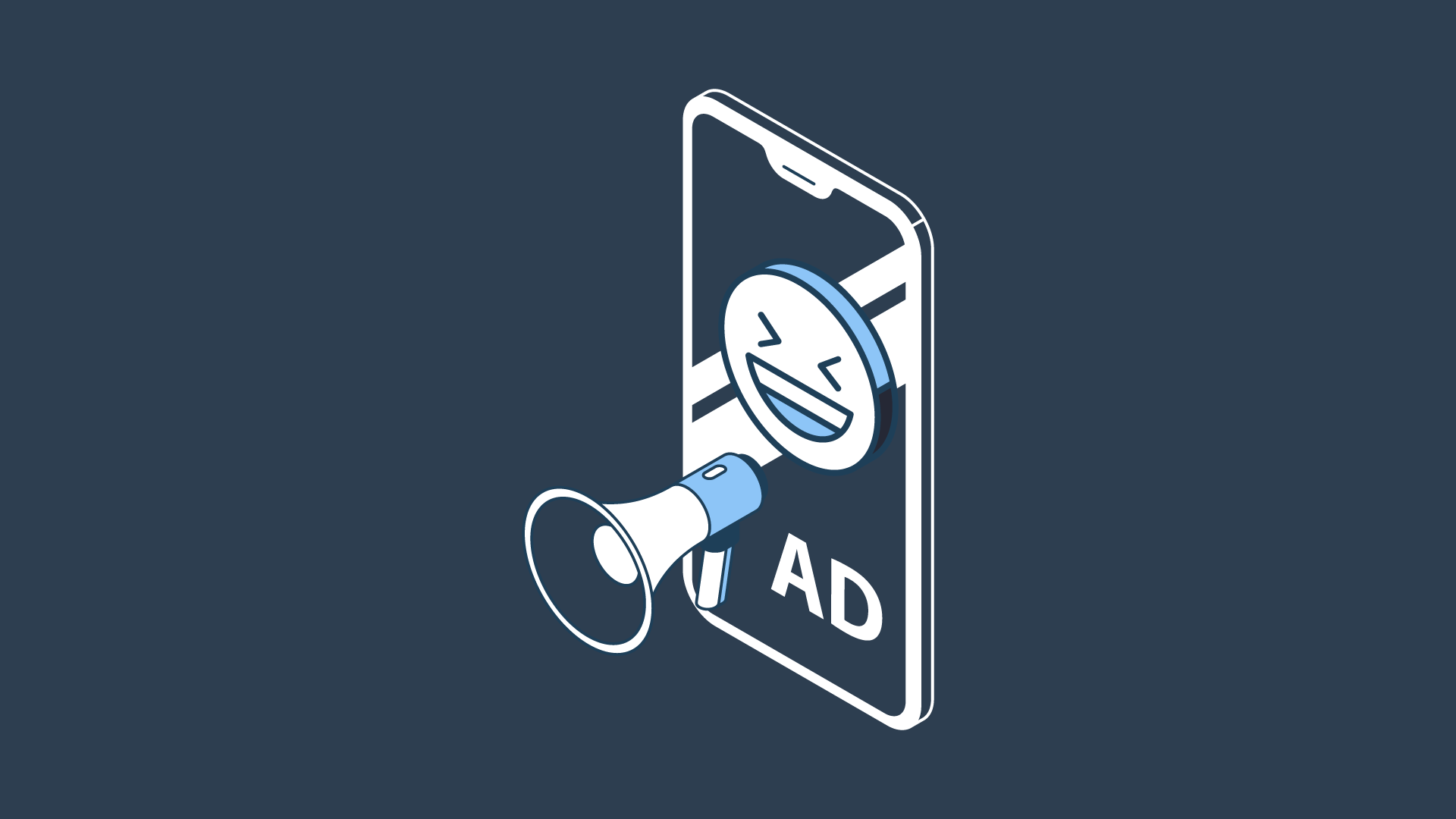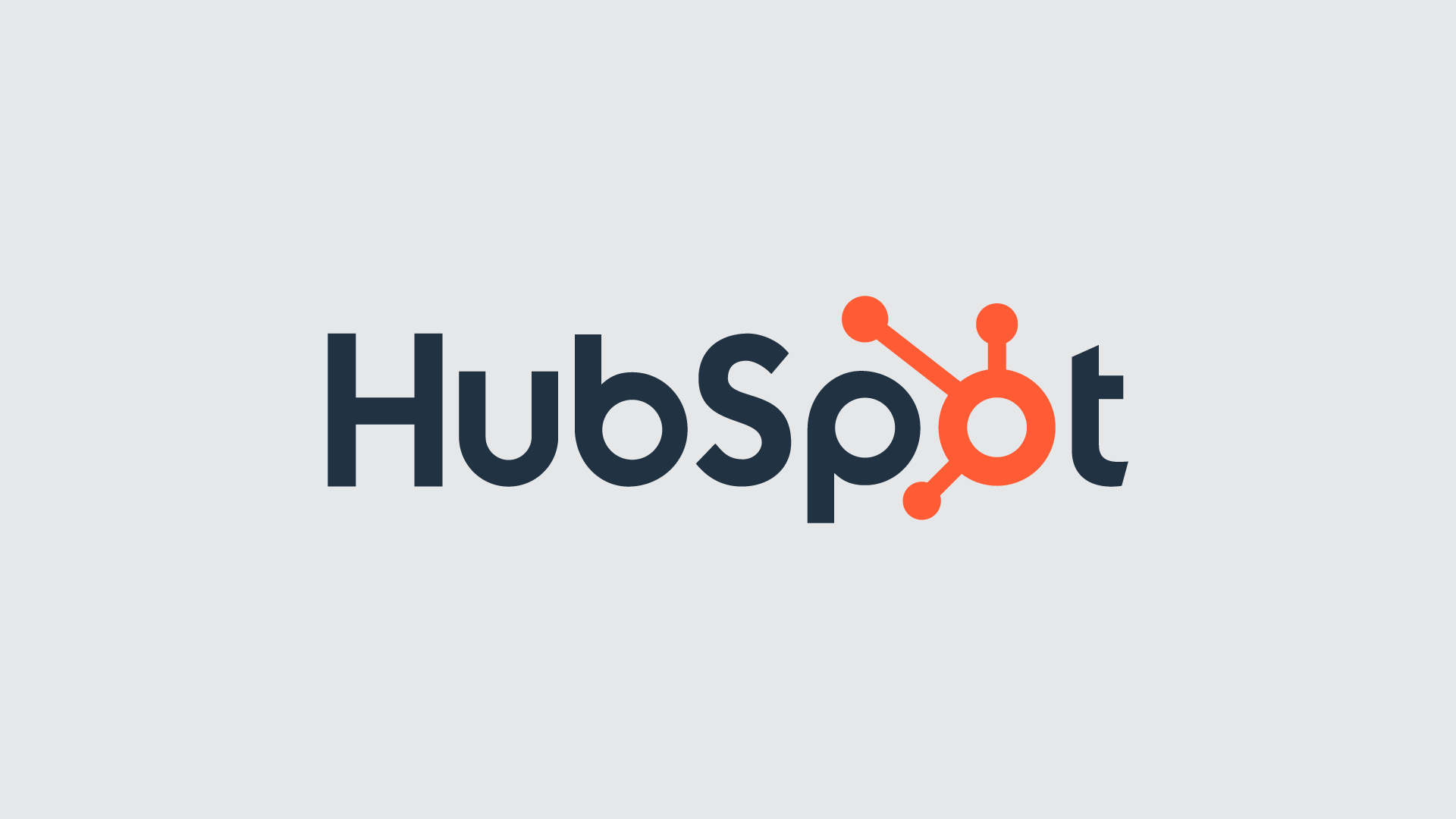Hubspot is a powerful marketing tool that helps businesses build their brand and generate leads. The software offers a variety of tools and services that allow marketers to create effective campaigns.
HubSpot’s Marketing Hub offers a variety of powerful marketing capabilities and resources to help you attract, engage, and retain prospects. However, it’s the in-depth data analysis and reporting capabilities that enable your marketing, sales, customer support, and service teams to collaborate easily. This then truly makes HubSpot stand out from other CRM databases.
As a HubSpot Solutions Partner and digital business agency, we're a HubSpot partner and digital marketing agency so we can help you implement clear strategies and campaigns for maximum results using HubSpot tools.
|
HubSpot HubSpot is an integrated marketing platform that helps companies scale their business by delivering a best-in-market customer experience. |
9 Best Features of HubSpot Marketing Hub
Each tool and feature in Hubspot complements and enriches the experience of using another tool or feature, and the all-encompassing nature of the platform brings these tools and features together into one place where they're easy to access and simple to understand.
Here are nine essential features of Hubspot and some of its many benefits:
1. Automated CRM database
The core of everything your marketing and sales teams do involves HubSpot's powerful CRM database. With it, you can automate almost every aspect of your customer lifecycle - including nurturing leads, managing accounts, tracking conversion rates, and automating follow-up emails.
HubSpot's CRM database makes sure that every single lead, account, and opportunity gets tracked, measured, and acted upon. Every interaction is stored in one place so that you know exactly what's happening with your customers and prospects.
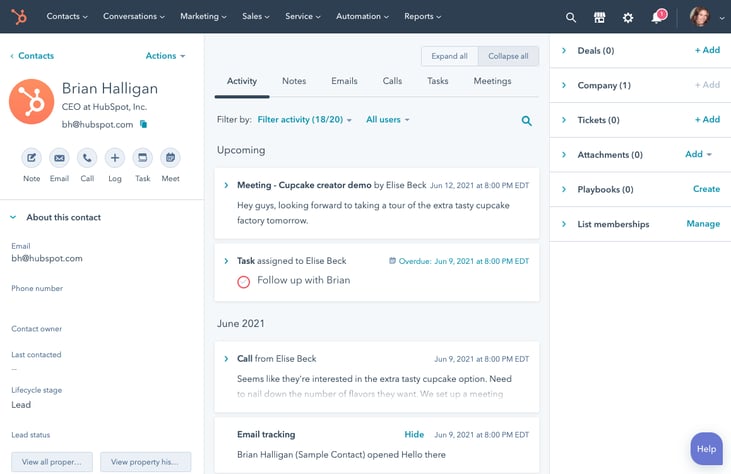
So whether you're looking to grow your pipeline, improve your ROI, or just keep tabs on how things are going, the HubSpot CRM database is the tool you need.
2. List segmentation
HubSpot allows you to organize your contact list by grouping them according to their characteristics.
You can use these groups to create buyer personas, which are lists of ideal buyers who share common traits. Or you can use groups to identify people who took similar actions, such as subscribing to a newsletter or registering for a webinar.
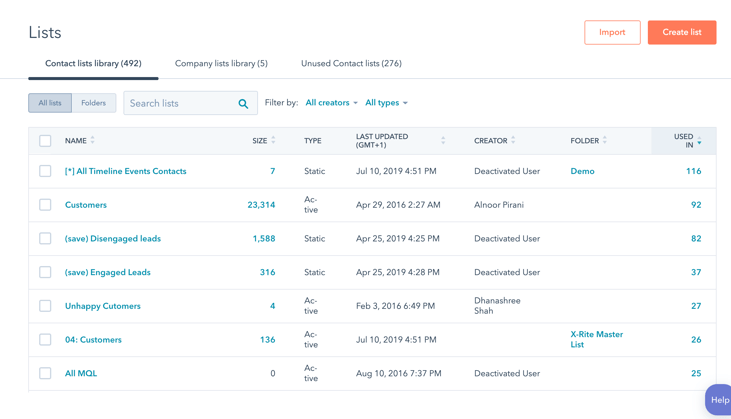
Creating contact groups allows your marketing team to tailor messages to different types of people.
For example, if you want to target people who live near a certain location, you could create a list of people living within a certain radius of that location. Then, whenever someone reaches one of these locations, their name will be added to that list. Your marketing team could then use that list to deliver targeted messages to these people.
You can also create static lists, which contain a snapshot of a specific set of individuals at a particular point in time. For example, if you're sending out a list of attendees for an upcoming event, you could include their names and email addresses so you can contact them later.
At Fine Media, our team can help you take this even further by helping you identify your key customers and then target them in the most effective ways. We conduct buyer persona workshops with our clients in which our team helps you identify clear, separate buyer personas to reach your ideal audience where possible, we can advise that we go for industry-specific content if that’s the best strategy.
3. Email Marketing Platform
Email automation platforms are essential for marketers. And the fact that HubSpot integrates into your existing marketing tools means it’s an easy choice.
HubSpot's marketing automation tool lets you send personalized emails to prospects, which include custom messages, call-to-actions, links, and imagery. It also lets you test your emails across different platforms and clients before sending them out.
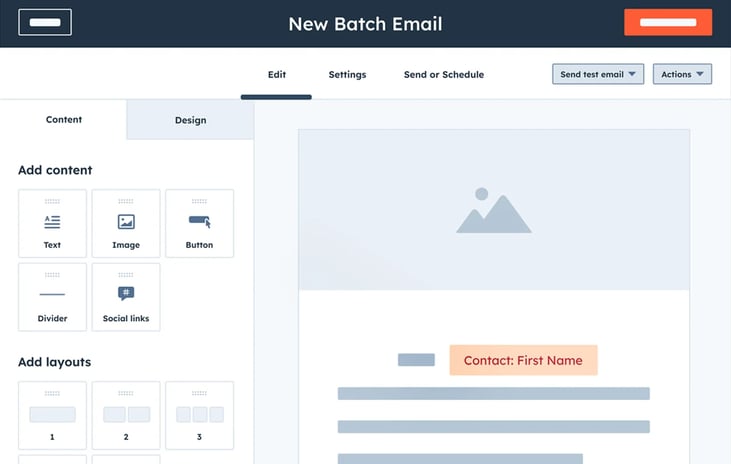
There’s an easy-to-use tool that allows marketers to customize their emails using pre-designed templates without having to call in a developer.
You can use the email feature to track various performance indicators for each email campaign, including its overall success, the number of subscribers who opened an email, the percentage of people who clicked through to another page after opening the email, and so on.
You can use HubSpot's built-in email functionality to send out messages directly to your contacts within HubSpot using the Contacts tab. However, if you wanted to use another email service, you'd need to integrate it into HubSpot so that it could access the contact list. It might not be easy to set up.
4. Paid Ad Tracking
HubSpot's ad integration helps brands track the performance of their LinkedIn, Facebook, and Google Ads, giving them insight into how well their campaign is performing. While the tool doesn't completely replace your Google Analytics account, it does make daily performance metrics, maintenance, and attribution easier and more accessible.
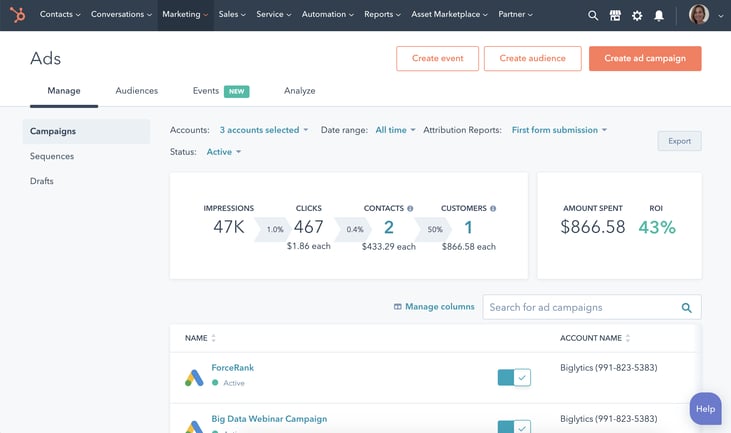
The best part of integrating your ad spend with HubSpot is the opportunity to link those interactions back to contacts in your HubSpot CRM. This gives you access to all of your customer data and allows you to see exactly what's driving sales and conversions, without having to rely on manual research.
5. Social Media integration and Management
Social media is a key component of any modern marketing campaign. Whether you’re trying to build brand awareness, drive traffic, or increase conversions, there’s no doubt that social media plays a vital role.
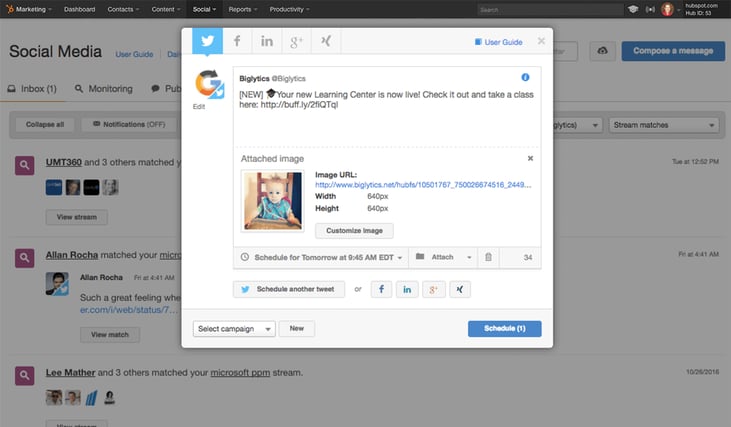
With HubSpot, you can manage all of your social profiles from one place. This includes Facebook, Twitter, LinkedIn, Instagram, Pinterest, YouTube, and more. You can schedule posts, monitor analytics, and keep tabs on what’s working and what isn’t.
The software also offers a variety of integrations with other popular apps like Salesforce and Gmail. These allow you to sync data between the two services, making it easier to analyze and act upon the information.
6. Landing pages, web pages, and blogs
You can use HubSpot to create SEO-optimized content:
- Websites to inform your prospects of what you're offering;
- Blogs to explain things and give advice on anything that your ideal customer might search for, building trust and helping you align with HubSpot's inbound marketing methodology;
- Effective landing page design increases your conversions and encourages your website visitors to engage further with your business and sign up for more content. To begin building relationships with prospects in an inbound way, add them to your CRM system.
- You can also include call-to-action buttons on these pages to direct people to the best place for them to go next.
- HubSpot enables marketers to analyze their site traffic by page view, track bounce rate, click rate and average time spent per visit determine which pages convert better than others, and measure overall visitor behavior on each page.
![Why You Need to Create More Landing Pages [Data + Tips]-4](https://www.finemediabw.com/hs-fs/hubfs/Blog/HubSpot/1.%20What/Marketing/Why%20You%20Need%20to%20Create%20More%20Landing%20Pages%20%5BData%20+%20Tips%5D-4.webp?width=1054&height=820&name=Why%20You%20Need%20to%20Create%20More%20Landing%20Pages%20%5BData%20+%20Tips%5D-4.webp)
7. Automated workflows
HubSpot’s Workflow tool enables marketers to automate repetitive tasks, such as sending out emails or posting blog articles, while providing instant feedback based on metrics like open rates and bounce rates. These insights help you make adjustments to future campaigns, ensuring they reach the right audience and produce optimal results.
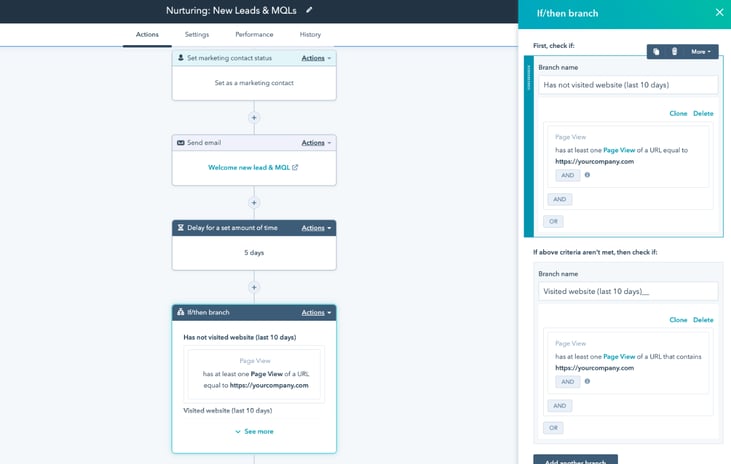
Workflows can be triggered by events, such as receiving a lead, or by actions taken by contacts, such as taking notes or downloading a file. They can even be triggered by certain conditions within the workflow itself, such as having a particular number of interactions with a given piece of content.
You can also use workflows to send different types of content to contacts depending on what they do. For example, you could send an ebook about a product to someone who downloads a PDF version of the same document, or a newsletter to someone who reads a blog post.
8. A/B testing
With the HubSpot A/B testing feature, you can easily test different versions of your emails, landing pages, forms, webpages, ads, etc., to see which one performs the best. You can also use it to compare how each element affects the success of your campaigns across multiple channels like email, social media, mobile apps, and more.
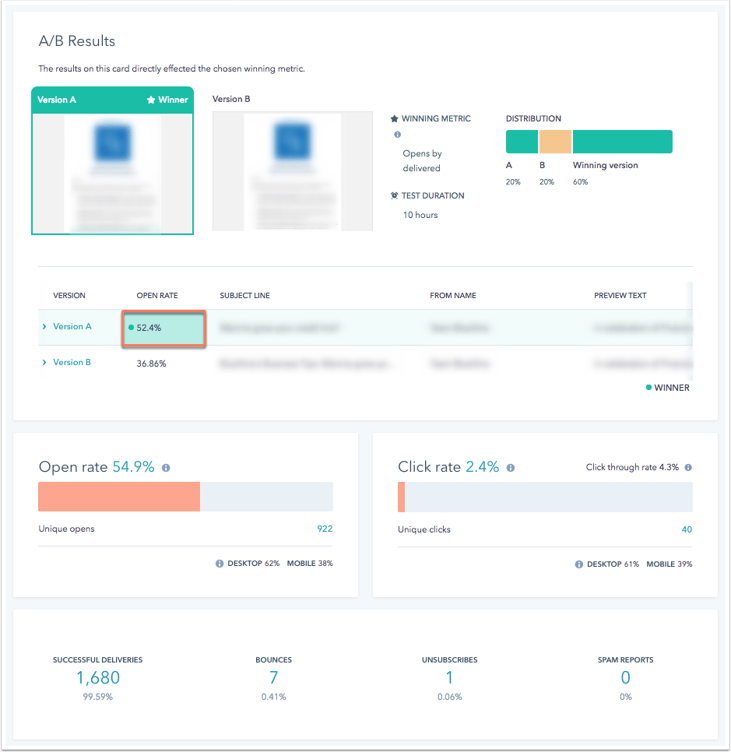
With this, along with the thorough analytics offered by HubSpot, you're equipped with detailed market insights to help you understand what works best for your target audience, potentially including what's most effective for different specific groups or buyer personas within your audience, giving your a chance to improve and optimize the potential of your marketing efforts over time with better-targeted content.
For example, you could run an experiment with two variations of your homepage and track how many people convert into customers depending on which version converts the most visitors into leads.
9. Dashboards
Dashboards are a great tool for helping you better manage your marketing efforts. They provide a single source of information about how well your marketing channels are performing across the entire customer journey, including lead generation, site visits, social media interactions, email open rates, etc.
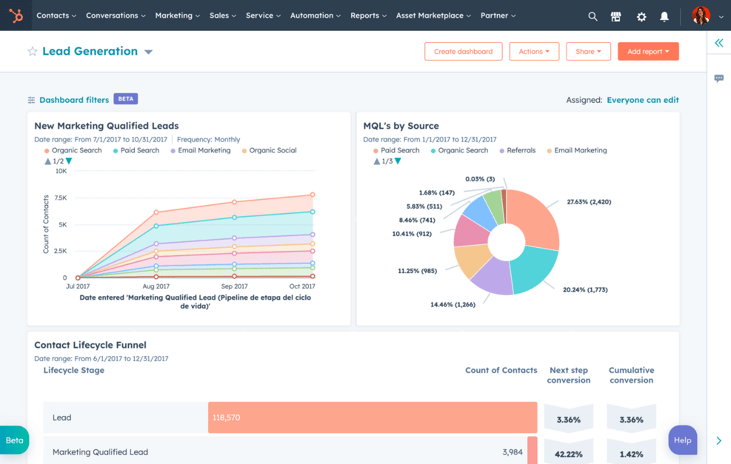
You can use HubSpot’s dashboard feature to see what types of content performed best, where people clicked, and how many times they visited different sections of your site. This helps you identify areas where you might want to improve your marketing strategy and allows you to focus your resources accordingly.
Dashboards help marketing and sales teams collaborate by providing them with one source of data for decision-making and measuring results.
The Takeaway
The real benefit of using any of HubSpot’s tools is when they're combined. When your company uses the Sales Hub, Marketing Hub, and Service Hub, they're able to communicate with each other like never before.
For example, if you compared HubSpot's marketing software to an external service that was solely focused on email marketing, you would likely find that HubSpot's product has fewer specialized tools.
However, the fact that HubSpot’s email tool integrates with the other parts of the system makes creating, sending, analyzing, and managing email messages easier.
This same principle holds for the rest of HubSpot’s tools which help all teams streamline their technology stacks and increase efficiencies across the entire organization.
Ready to supercharge your marketing efforts with HubSpot? As a certified HubSpot Partner Agency, we are ready to be your guide to mastering HubSpot Marketing. Contact us today to elevate your marketing game!

